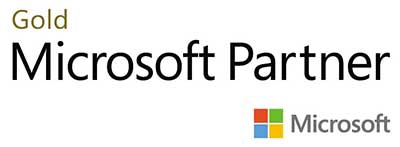Similarly, if you’re seeking to automate your operations, you need to be familiar with which automation technology to proceed with. This is because the process involved with integrating Robotic Process Automation technologies consumes time and money as well. In this article, we’ll be guiding you on choosing the right RPA platform for your business.
What Is Robotic Process Automation?
Even though RPA Automation is becoming more popular every day, many businesses are still unaware of its capabilities, foundation, deployment models, and other aspects. Industry-leading technology companies like UiPath, Automation Anywhere, and Blue Prism are a few big names that offer top-notch Robotic Process Automation tools for businesses to integrate and employ. They’re also known for providing RPA consulting services.
What To Consider While Selecting An Appropriate RPA Platform For Your Business?
You need to consider your company's objectives and requirements to choose the best RPA platform. Discussed below are a few aspects you should keep in mind:
EXAMINING THE INTEGRATION CAPACITY
The greatest factor of RPA technology is it is very simple to adopt, very non-invasive & it is well integrated with the current legacy system. To reduce downtime and ensure a smooth transition after deploying the automation solution, it is vital to examine the tool's integration capacity with current systems while selecting the proper tool.
USER FRIENDLINESS
The Robotic Process Automation platform you select needs to be user-friendly and flexible enough to enable employees with little training to handle and execute basic automated processes with ease. The platform needs to also be suitable for business analysts who are not programmers.
You May Also Like: 10 Most Important RPA Tools in Demand
SPEED AND EFFICIENCY
To increase process speed is one of the most significant criteria. The primary purpose behind integrating the RPA tool is to improve the process's speed and efficiency. As a result, you should examine whether the Robotic Process Automation tool boosts speed in terms of task completion, mapping processes, and other factors.
TECHNICAL SPECIFICATIONS
Some of the major technical specifications that your organization should consider are screen scraping, scalability, cognitive capabilities, and many more. Because software robots deal with sensitive information, you need to examine the tool's security aspects.
As a result, essential security measures are required, and you should determine the level of security you prefer before selecting an RPA tool accordingly. Otherwise, your system may be subject to external hostile assaults, data misuse, privacy concerns, and other issues.
COST OF OWNERSHIP
The key factor of the RPA tool is the total cost of ownership, which has to consider before deciding. This can be determined by a variety of factors, including vendor prices, license fees, installation costs, and maintenance costs, among others. Many businesses want to start small and grow over time, so determining the cost of ownership of an RPA tool while keeping the firm's Robotic Process Automation roadmap in view is critical.
SCALABILITY
One of the most significant characteristics of scalability is the capacity to handle a large number of RPA robots to execute a plethora of tasks. Another issue is widening the scope of use by providing continuous support for expanding how and where the solution is used in a company. Improved accessibility is another feature to look for in an RPA tool. New technologies should be simple to incorporate with the tool.
DESIGN
Any business can benefit greatly from a well-designed Robotic Process Automation solution. Such Robotic Process Automation solutions will give you an indication of when and where you may utilize each RPA tool, as well as how well it can be customized to execute specific tasks. Therefore, before you select an RPA tool, you should ensure that you possess the necessary skills and expertise needed for utilizing it efficiently.
EXCEPTION HANDLING
Robotic Process Automation solutions should be able to detect faults more quickly during automation than manual detection. In some circumstances, errors necessitate human intervention, necessitating the referral of experts. Those errors, on the other hand, should be handled automatically if no attention is required. If your system is vulnerable to more errors, an RPA tool with good exception handling strategies is recommended.
STRONG VENDOR SUPPORT
Clients should have access to robust vendor support from technology providers. It's usually a good idea to go with reputable companies and make sure you have a decent support system. Streamlined deployments, more technology advances, user training, and certifications along with other benefits can all be facilitated with effective vendor assistance.
MANAGEMENT
How you manage Robotic Desktop Automation consulting services is one of the most significant factors to consider when selecting an RPA tool. The technology should give personnel participating in the process more visibility, as well as notifications of pending activities, ROI dashboards, and other monitoring and control methods.
Bottom Line
Before proceeding with purchasing Robotic Process Automation solutions, businesses need to keep in mind the above factors and choose wisely. Every RPA tool serves a unique function, and in order to assess an RPA tool's full potential, you must value one or more characteristics over the others and select the one that best meets your needs.
Also Read: Attended vs Unattended vs Hybrid Bot
FAQs
WHAT ARE THE BENEFITS OF USING ROBOTIC PROCESS AUTOMATION?
Robotic Process Automation benefits your business by increasing productivity, efficiency, enhancing security, and providing better customer service.
WHICH ARE SOME OF THE LEADING INDUSTRIES WHERE ROBOTIC PROCESS AUTOMATION HAS BEEN IMPLEMENTED?
Robotic Process Automation has been implemented in industries such as finance and banking, manufacturing, retail, healthcare, and telecommunications.
IS IMPLEMENTING RPA A VERY TIME-CONSUMING PROCESS?
The speed with which an RPA software system may be implemented is determined by the employee's ability to give effective, high-quality training. Robotic Process Automation technology takes longer to implement the more complicated a task is.
HOW HAS ROBOTIC PROCESS AUTOMATION EVOLVED?
Robotic Process Automation was previously only available to large businesses looking to automate monotonous tasks and save money. It has now matured to the point that adoption is becoming popular and it is being used for digital transformation.
WHAT IS THE SCOPE OF ROBOTIC PROCESS AUTOMATION IN THE LONG RUN?
Professionals in any field will be able to make time for more important work after integrating RPA solutions in their operations. Employees will be available to work on tasks that require emotional intelligence and creativity as a result of automating monotonous tasks.
COMPANIES OF WHAT SIZE BENEFIT FROM ROBOTIC PROCESS AUTOMATION?
Regardless of whether you’re a start-up or a large organization, automation will benefit your business depending on the RPA solutions you integrate.
.png?lang=en-US&ext=.png)

.webp?lang=en-US&ext=.webp)

.webp?lang=en-US&ext=.webp)

